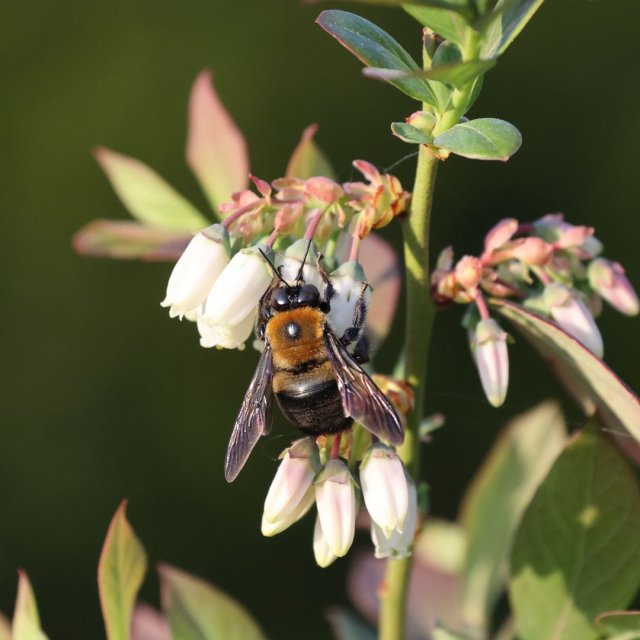Pollination is a fundamental process in the life cycle of many plants and is crucial for food production worldwide. This process, which may seem simple at first glance, is actually a complex and essential dance involving a variety of agents, including insects, birds, wind and water. Understanding pollination and its importance is essential not only for agriculture, but also for the conservation of biodiversity and ecological balance.
What is Pollination?
Pollination is the process by which pollen, which is the male gamete of plants, is transferred from the male reproductive structures (anthers) to the female reproductive structures (stigmas) of a flower. This process allows for fertilization and seed development, resulting in the formation of new individuals of the plant.
There are two main types of pollination: autogamous pollination (or self-pollination) and cross-pollination. In self-pollination, pollen from one flower fertilizes the ovary of the same flower or another flower on the same plant. In contrast, cross-pollination involves the transfer of pollen between flowers of different plants.
Pollination Agents
Pollination agents play a crucial role in this process. Among the most common are:
Insects: Insects, especially bees, butterflies, and beetles, are some of the most efficient pollinators. Bees, in particular, are responsible for pollinating about 70% of flowering plants, including many of our fruits and vegetables. Insects are attracted to the nectar and pollen of flowers, and in their search for food, they carry pollen from flower to flower.
Birds: Birds, such as hummingbirds, also play an important role in pollination. These birds are attracted to brightly colored, nectar-producing flowers. As they feed, pollen sticks to their beaks and plumage and is transferred to other flowers.
Wind: Wind pollination is common in plants such as pines and grasses. In this case, pollen is carried by air to the stigma of a receptive flower. Although this form of pollination is less efficient than that carried out by insects and birds, it is essential for many plant species.
Water: In some aquatic ecosystems, pollination can be accomplished by water. Aquatic flowers, such as water lilies, can release pollen into the water, which is carried to other flowers.
Importance of Pollination
Pollination is crucial for food production and biodiversity conservation. Without pollination, many plants would not be able to produce fruits, seeds or grains. This would affect not only the plants themselves, but also the animals and humans who depend on these plants for food.
Food Production: Many of the fruits, vegetables and nuts we consume daily depend on pollination. Apples, pears, cherries, almonds and pumpkins are just a few examples of crops that require pollination to produce quality fruit in sufficient quantity.
Biodiversity Conservation: Pollination is also essential for biodiversity conservation. Plants that are effectively pollinated have a greater chance of reproducing and maintaining their populations. This, in turn, supports the ecosystems in which they live and the animals that depend on them for food and habitat.
Ecosystem Sustainability: Sustainable ecosystems depend on pollination to maintain the balance between different plant and animal species. The loss of pollinators can lead to a decrease in plant diversity and, consequently, affect the entire food chain.
Threats to Pollinators
Despite their importance, pollinators face several threats that put their survival at risk and, therefore, the balance of ecosystems.
Habitat Loss: Urbanization and intensive agriculture have led to the loss of natural habitats for pollinators. Deforestation and the conversion of natural lands into agricultural fields reduce the number of plants that pollinators need to feed and reproduce.
Pesticide Use: Pesticides used in agriculture can be harmful to pollinators. These chemicals can directly kill insects or affect their ability to find food and navigate.
Climate Change: Climate change is altering flowering patterns and food availability for pollinators. Variations in temperatures and changes in precipitation can desynchronize the flowering time of plants with pollinator activity.
Diseases and Parasites: Diseases and parasites also affect pollinators. For example, bees are threatened by several pathogens and parasites that affect their health and ability to pollinate.
Conservation and Solutions
Pollinator conservation is critical to ensuring the health of our ecosystems and food security. There are several strategies that can help protect pollinators and promote effective pollination.
Protecting Habitats: Conserving and restoring natural habitats is key to providing shelter and food for pollinators. Creating vegetation corridors and pollinator-friendly gardens can help provide essential resources.
Responsible Pesticide Use: Reducing pesticide use and opting for more sustainable pest control methods can help protect pollinators. Additionally, applying pesticides at times when pollinators are not active can minimize impact.
Encouraging Plant Diversity: Growing a variety of plants that bloom at different times of the year can ensure that pollinators have continuous access to food. Gardens that include a mix of native and ornamental flowers are especially beneficial.
Research and Education: Supporting research on pollinator health and educating the public about its importance can encourage conservation practices and increase awareness of the issues they face.
Pollination is a vital process for life on Earth, influencing food production, biodiversity conservation and ecosystem sustainability. As we face challenges such as habitat loss, pesticide use and climate change, it is critical to take action to protect pollinators and ensure a healthy future for our planet. Each of us can contribute to this cause, whether by planting flowers in our gardens, supporting sustainable farming practices or simply educating ourselves about the importance of these small but powerful agents of nature.
